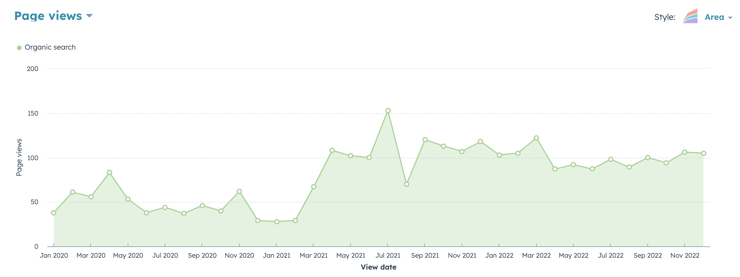The Benefits & Challenges of Using ChatGPT to Build a Website
The idea of a ChatGPT website builder is undoubtedly intriguing. You know that having a well-designed website is crucial for the success of any B2B...
3 min read
Luke Donahue
|
September 2, 2021
So, you’ve written a great blog that will help educate potential leads and delight your current customers. Excellent! Now, what's next? How do you know if your blog was a hit?
The reality is that you won't know right away. In fact, you need to wait.
As a rule of thumb, you should wait at least three months before attempting to optimize your blog post. Why? There are several reasons:
If your blog has been up for at least three months, it’s collected enough data and it may be ready to be re-optimized.
Related Content – B2B Blogging: How to Improve Website Traffic Using Content Marketing
Once you’ve selected the blog you want to re-optimize, the first thing you need to do is see how it’s currently performing. This information should be available to you in your CRM or website hosting provider.
First, analyze the sources of traffic for your blog. As a general rule, blogs are normally driven by organic traffic (e.g., Google searches), so that will normally be the highest volume for your post.

The image above is from one of Open Path’s blogs. Fun fact: this blog is one we identified for optimization back in January of 2021. As you can see, our efforts paid off and, shortly afterwards, the blog saw a surge in traffic. Don’t worry! We’ll show you how to do the same with your own blog.
When someone types in a query into a search engine—like Google or Bing—and your blog post comes up in the results. When someone clicks your link from the search results, that’s considered organic search traffic. Boosting organic search is done through SEO optimization and keyword research. We’ll go into this in more detail later on.
Related Content: How to Improve Website Traffic Using Your Company's Blog
This is rare for a blog post. Direct traffic refers to when someone types in your blog’s url directly into the navigation bar on their browser. For blogs, this normally occurs when either someone has your blog saved as a bookmark or the browser has remembered your url and recommends it when a user is typing it into the navigation bar and they proceed to revisit your blog.
If your blog is getting high traffic from referrals, that is a great sign. That means your blog is getting linked to from other pages—whether yours or someone else’s—and people are clicking through to your blog. If referral traffic is high, that can mean other website owners find your content useful and authoritative, which is good for your website as a whole because it helps boost your backlinking performance and domain authority.
When someone clicks on your blog from a social media post, like from Twitter or Facebook, it generates social traffic. Social traffic is usually driven by your own business account or your employees posting or sharing the blog. However, as you build your brand authority, advocates may also start sharing your content, increasing your social reach.
It’s not a bad idea to link out to your blog in the footer of your email communications. Doing so can increase email traffic -- when someone lands on your blog from an email link.
It’s rare for a blog to have paid traffic, as paid traffic refers to traffic driven by ads. Normally, if you’re running an ad, the link is to somewhere else (a landing page, solutions page, a content offer, or a webinar) on your website and not an individual blog.
Related Content: Why Paid Ads Alone Won't Establish Your Online Presence
Now that you understand how to use your blog's traffic data and analytics let's put it to work! Check out our next blog: A Step-By-Step Guide to Boosting Organic Blog Traffic.

The idea of a ChatGPT website builder is undoubtedly intriguing. You know that having a well-designed website is crucial for the success of any B2B...

We find ourselves in the midst of the digital age, where marketing plays a crucial role. In this era,...

It may sound simple, but to create an effective marketing plan, businesses must first understand their potential customers and how to engage with...

When acquiring or transforming a business for market leadership, your decisions require valuable input. Effective delegation is vital to your success...